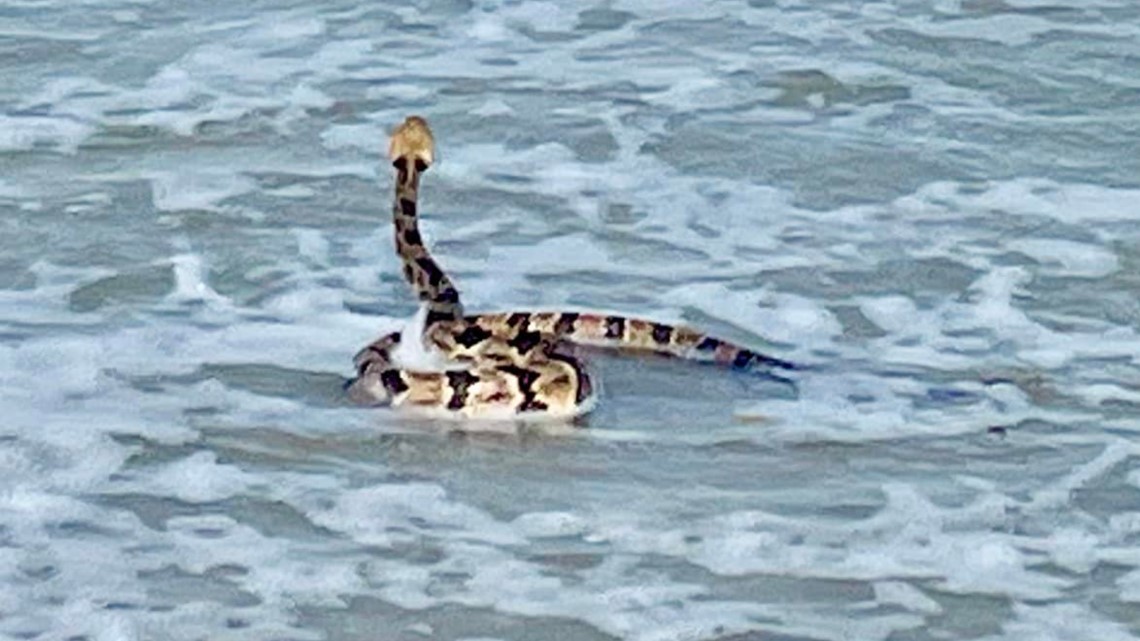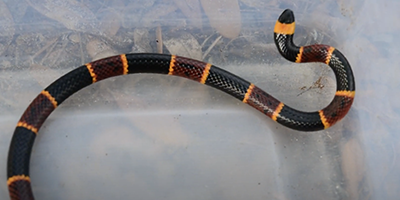Myrtle Beach, South Carolina, is a stunning coastal destination known for its sandy beaches and vibrant culture. However, it’s also home to a diverse population of snakes that inhabit the surrounding areas, including marshlands and forests. This article aims to provide a comprehensive understanding of these fascinating creatures, their ecological role, and how to coexist with them safely and respectfully.
Snakes of Myrtle Beach: A Diverse Population
Myrtle Beach is part of the larger ecosystem of the coastal plains, providing a habitat for various snake species. The climate and geography of the region support both native and non-native species.
Common Snakes Found in Myrtle Beach
Here’s a look at some of the most common snakes you might encounter in and around Myrtle Beach:

- Eastern Cottonmouth (Agkistrodon piscivorus): Often found near water sources, this venomous snake is characterized by its thick body and broad head.
- Black Racer (Coluber constrictor): A non-venomous snake that is quick and agile, often seen in gardens and fields.
- Common Garter Snake (Thamnophis sirtalis): Recognizable by its distinctive stripes, the garter snake is harmless and often found near water.
- Eastern Coral Snake (Micrurus fulvius): This venomous snake is relatively rare but is identifiable by its bright coloration.
- King Snake (Lampropeltis getula): Known for its ability to eat other snakes, including venomous ones, the king snake is revered in the area.
Comparison of Common Snakes
| Species | Venomous | Common Habitat | Diet | Length |
|---|---|---|---|---|
| Eastern Cottonmouth | Yes | Marshes, swamps | Fish, amphibians | 2 – 4 ft |
| Black Racer | No | Gardens, fields | Rodents, insects | 3 – 6 ft |
| Common Garter Snake | No | Near water | Frogs, small fish | 2 – 4 ft |
| Eastern Coral Snake | Yes | Woodlands | Lizards, small mammals | 2 – 3 ft |
| King Snake | No | Forests, grasslands | Other snakes, small mammals | 3 – 7 ft |

The Role of Snakes in the Myrtle Beach Ecosystem
Snakes play a vital role in maintaining the ecological balance in Myrtle Beach. They are both predators and prey, contributing to the food web by controlling rodent populations and providing food for birds of prey and larger mammals.

Benefits of Snakes to the Environment
- Pest Control: Snakes regulate the populations of rodents and other small animals, which can be detrimental to gardens and crops.
- Indicator Species: The health of snake populations can indicate the overall health of the ecosystem, showing whether the environment is thriving or in decline.
- Biodiversity: By contributing to biodiversity, snakes help create a robust ecosystem that supports various forms of wildlife.

Understanding Local Regulations
In South Carolina, snakes are protected under certain regulations. It is essential for residents and visitors to be aware of these laws to foster coexistence.

Protected Species in South Carolina
Some species, such as the Eastern Indigo Snake (Drymarchon couchi), are protected under state law. It is illegal to harm or kill these snakes. For more information, visit the South Carolina Department of Natural Resources.
Dealing with Snakes: Safety Tips and Techniques

Encountering a snake can be alarming, but understanding how to react is crucial for your safety and the snake’s welfare.
Safety Tips When Encountering Snakes

- Stay Calm: Most snakes are not aggressive and will avoid humans if given the chance.
- Observe from a Distance: If you see a snake, back away slowly and give it plenty of space.
- Educate Yourself: Learn to identify common snakes in the area. Knowing which are venomous is vital.
- Keep Your Yard Clean: Reduce hiding spots for snakes by maintaining your garden and yard. Remove debris, tall grass, and piles of wood.
What to Do If Bitten by a Snake
If bitten by a snake, follow these steps immediately:

- Call emergency services immediately.
- Try to remember the snake’s color and shape.
- Keep the affected limb immobilized and below heart level.
- Avoid applying ice or a tourniquet.
First Aid: Quick Reference Guide
| Action | Do | Don’t |
|---|---|---|
| Remain Calm | Yes | No |
| Call 911 | Yes | No |
| Immobilize the Limb | Yes | No |
| Use a Tourniquet | No | Yes |
| Ice the Bite Area | No | Yes |
Local Myths and Folklore Surrounding Snakes
Throughout its history, Myrtle Beach and surrounding areas have developed various myths and folklore about snakes. Many tales center around the feared venomous snakes and the enchanted properties of snakes in indigenous culture.
Popular Local Folklore
- The Snake and the Stream: A local legend tells of a giant snake that protected a vital water stream. Those who respected its territory were rewarded with bountiful fishing.
- Snakes as Symbols of Rebirth: In some cultures, snakes represent transformation and healing, often associated with the changing seasons in Myrtle Beach.
Exploring Snake Habitats in Myrtle Beach
If you’re interested in observing snakes in their natural habitat, various parks and wildlife areas around Myrtle Beach offer a chance to see these creatures up close.
Top Locations for Snake Watching
- Huntington Beach State Park: This park features diverse habitats, making it an excellent spot for snake enthusiasts.
- Pawleys Island Nature Park: Known for marshland and coastal habitats, you’re likely to see various snake species here.
- Myrtle Beach State Park: This state park offers trails and a chance to spot both wetland and land snake species.
Guided Tours and Educational Programs
Many local organizations offer guided tours and educational programs that focus on the regional wildlife, including snakes. Look into programs at:
- Waccatee Zoological Farm: Offers programs about local wildlife, including snakes.
- Myrtle Beach State Park Tours: Regular workshops and guided tours help educate visitors about the local ecosystem.
FAQs About Snakes in Myrtle Beach, South Carolina
1. Are there venomous snakes in Myrtle Beach?
Yes, Myrtle Beach is home to several venomous species, including the Eastern Cottonmouth and the Eastern Coral Snake. Understanding how to identify them is crucial for safety.
2. What should I do if I see a snake in my yard?
Remain calm and do not attempt to handle it. Most snakes will retreat if given space. If you need to remove it, contact local wildlife control services.
3. How can I prevent snakes from entering my property?
Keep your yard tidy by removing debris, logs, and tall grass. Seal cracks in your home and ensure food and pet waste is disposed of properly.
4. Is it illegal to kill snakes in South Carolina?
Many snakes, especially protected species like the Eastern Indigo Snake, are illegal to harm or kill under state law. It’s essential to handle snake encounters responsibly.
5. Where can I learn more about local snakes?
Visit the South Carolina Department of Natural Resources or local wildlife conservation centers for educational resources and information on local snake species.
Conclusion: Coexisting with Myrtle Beach Snakes
Snakes are an integral part of the Myrtle Beach environment. By understanding their ecological role and being informed about safety practices, residents and visitors can coexist harmoniously with these creatures. Enjoying Myrtle Beach means appreciating its wildlife, including the often misunderstood snakes that contribute to the beauty and balance of this coastal paradise.